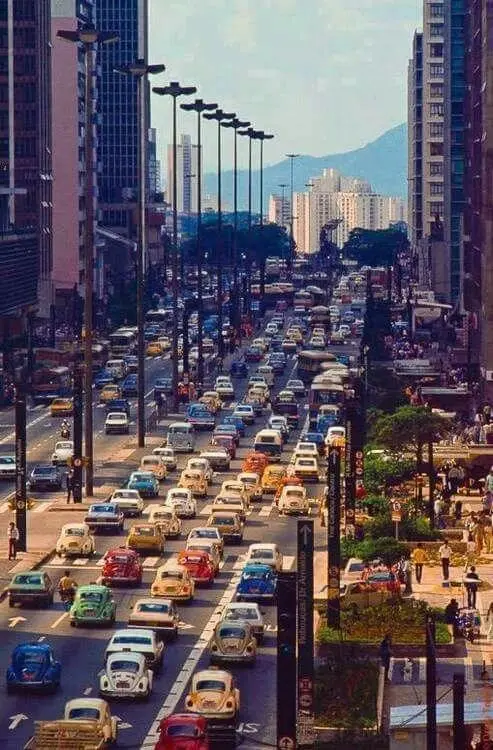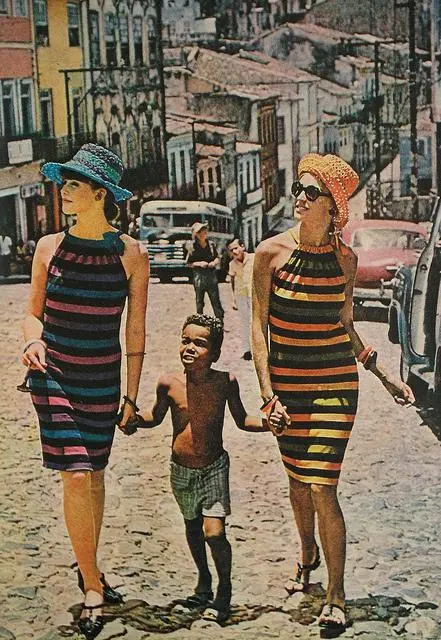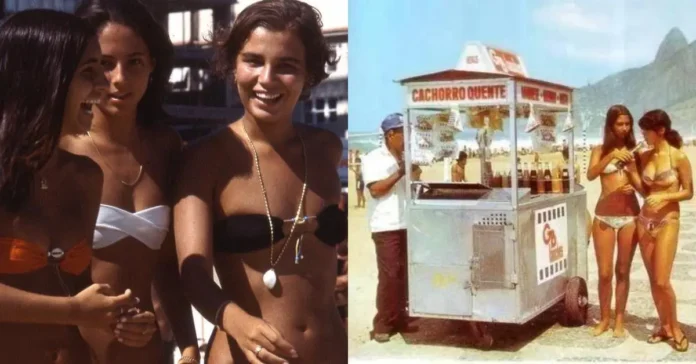The 1980s were a transformative decade in Rio de Janeiro, marked by vibrant beach culture, a distinct vacation style, and the bold yet elegant fashion statements of the city’s wealthy elite. Nestled between the Atlantic Ocean and lush mountains, Rio’s beaches—especially Ipanema and Copacabana—served as the ultimate playgrounds for both the rich and famous, as well as everyday Cariocas (locals).
Beach Life: Where Society Met the Sea
In the 80s, Rio’s beaches were more than just places to swim or sunbathe they were social hubs, fashion runways, and status symbols. Every inch of sand had its code. Ipanema, for instance, was seen as the trendier, more sophisticated spot, where artists, intellectuals, and the well-to-do mingled. Copacabana, with its iconic black-and-white patterned promenade, attracted tourists and locals alike but was slightly more commercial and bustling.
Despite their differences, both beaches shared one unifying factor: beach life was king. Mornings and afternoons were spent lounging under the Brazilian sun, with coconut water or a “caipirinha” in hand, watching the waves crash against the shore. Beach volleyball, known as “futevôlei” (a mix of soccer and volleyball), was also popular, showcasing the athleticism and easy-going spirit of Rio’s inhabitants.
The body was highly celebrated in Rio’s beach culture. Sun-kissed, fit physiques were prized, and many people were highly conscious of how they presented themselves on the sand. This emphasis on appearance, however, extended beyond simple vanity; it was a way of fitting into Rio’s image-conscious social fabric.
Copacabana Beach 80’s.
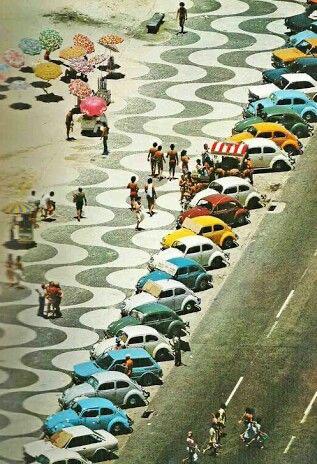
Fashion: Elegance with a Tropical Twist
The style of the wealthy in 1980s Rio mirrored a mix of laid-back luxury and sharp attention to detail. On the beaches, less was often more. Men wore classic swimming trunks, often in solid colors or minimal prints, while women’s swimwear—especially bikinis—became increasingly daring, as string bikinis rose in popularity. However, this was balanced by the art of elegance; chic beach cover-ups, lightweight dresses, and straw hats completed the ensemble. Fashion-forward sunglasses were an essential accessory.
Away from the beach, Rio’s affluent crowd embraced luxury brands and imported fashion from Europe and the U.S. Labels like Yves Saint Laurent, Chanel, and Lacoste were coveted. But there was always a tropical twist—vibrant colors, flowing fabrics, and a sense of ease that blended seamlessly with Rio’s sultry climate.
Nightlife in the 80s also shaped the style of the rich. Exclusive clubs in neighborhoods like Leblon and Gávea were where the well-heeled gathered to dance to samba, disco, and the emerging Brazilian rock scene. Fashion was flashier here: sequined dresses, sharply tailored suits, and gold accessories.
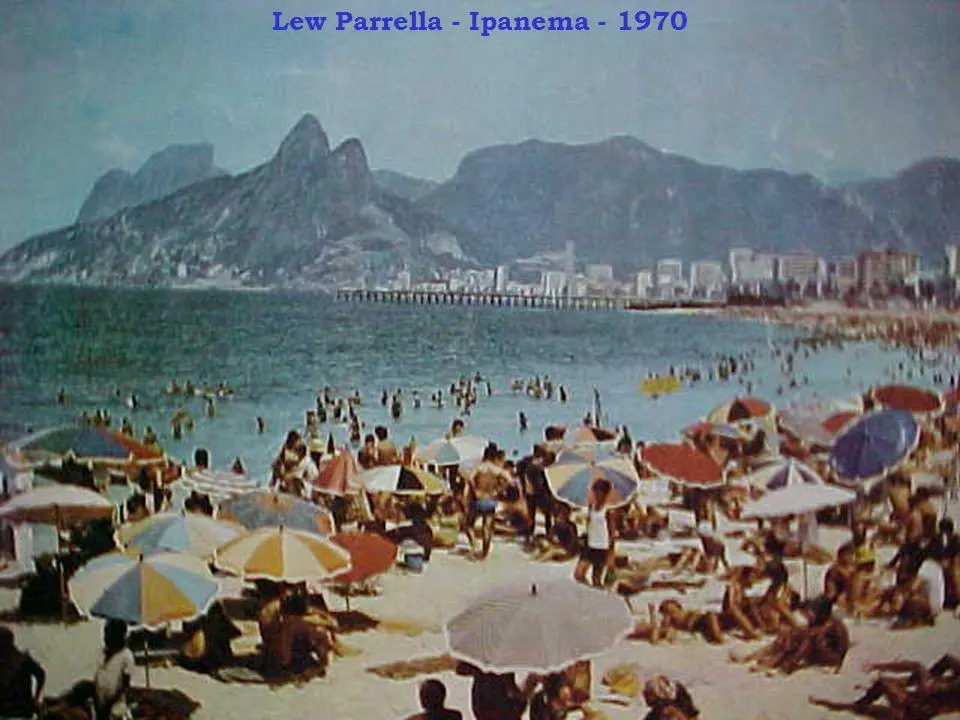
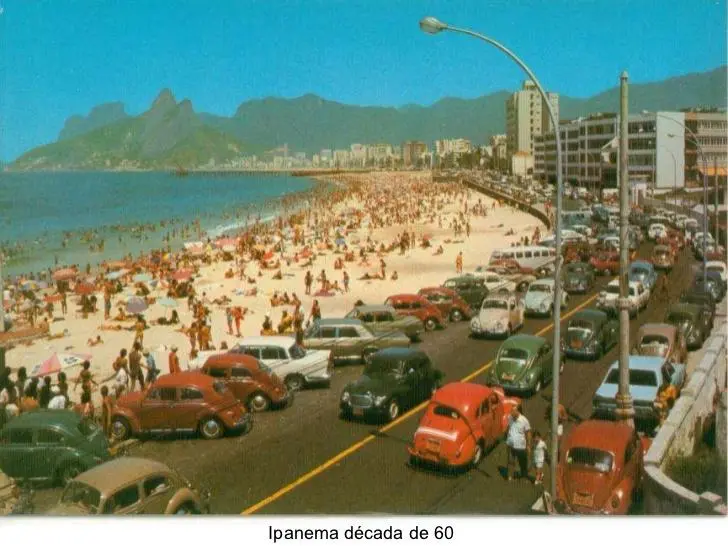
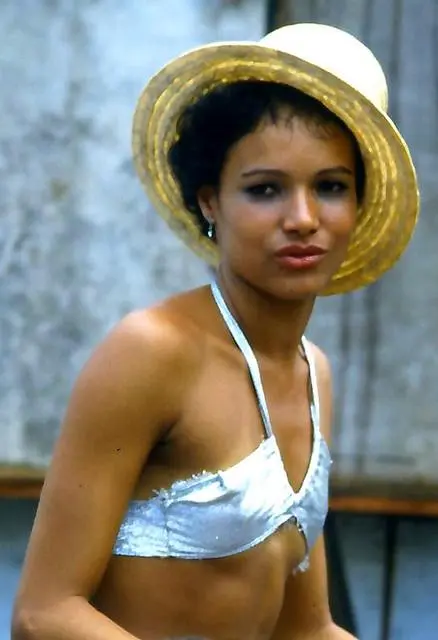
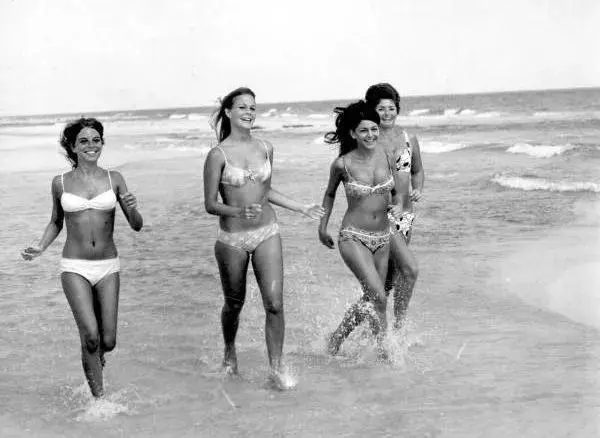
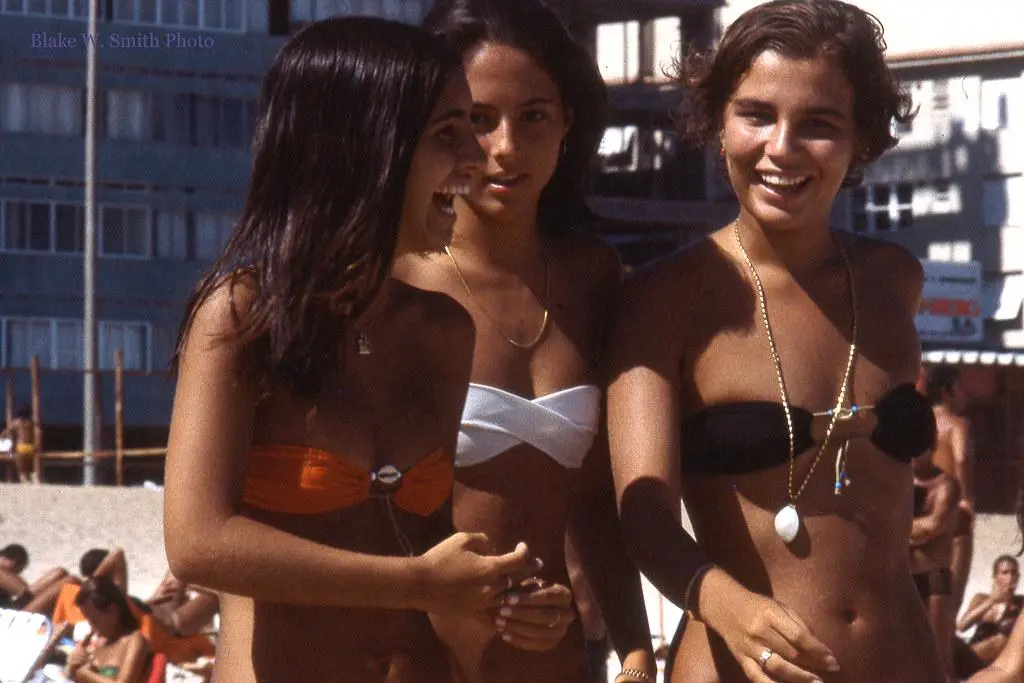
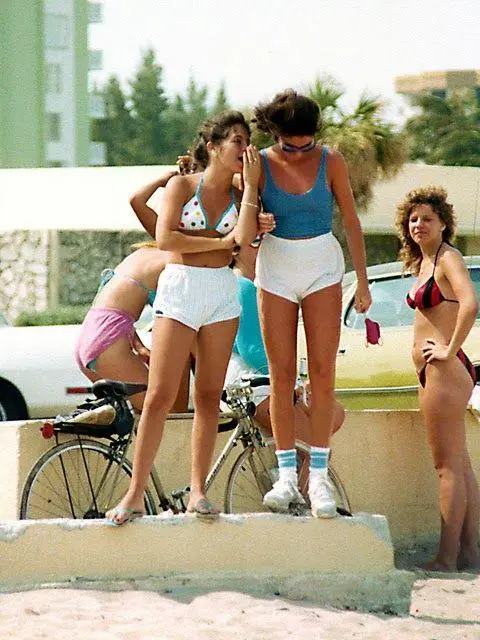
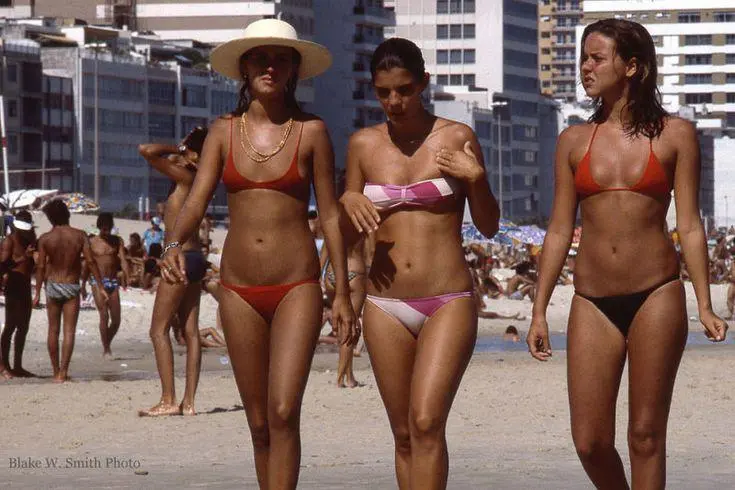
Cultural Norms: Elegance Over Edginess
Brazilian society in the 1980s was somewhat conservative, despite the daring fashions on the beaches. The wealthy class, in particular, valued a refined and polished image. One example of this is the cultural attitude toward tattoos.Tattoos were not yet widely accepted, particularly among the rich. A clean, unmarked body was seen as more elegant and sophisticated. This was a sharp contrast to later decades when tattoos became a form of personal expression and social rebellion. In the 80s, however, they were often associated with fringe groups, sailors, or the working class.
In the upper echelons of Rio society, decorum and a certain sense of respectability were still key. The wealthy were expected to maintain a certain level of refinement in public, even as they indulged in the joys of beach life and glamorous nightlife.
Tom Jobim on Ipanema Beach 1964. One of the inventors of the Bossa
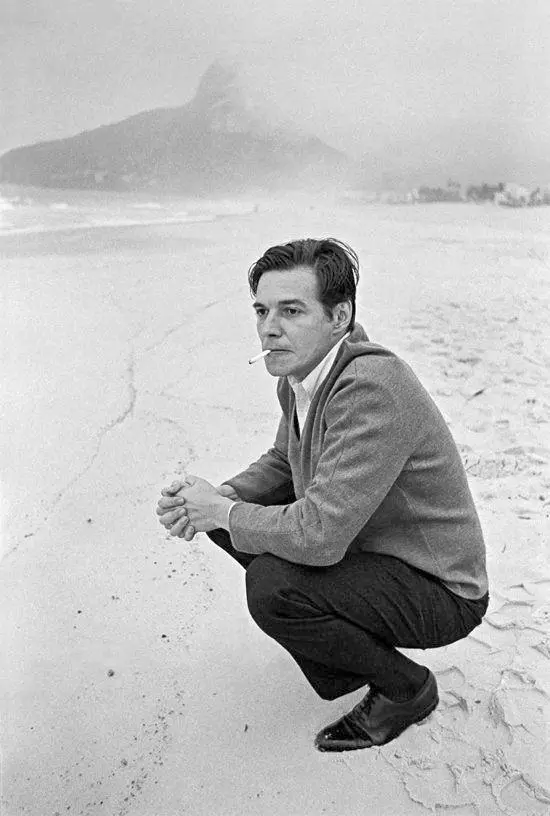
Vacations and Leisure: The Jet-Set Lifestyle.
For Rio’s rich, vacations were synonymous with luxury. Although Rio de Janeiro itself was a tropical paradise, it wasn’t uncommon for the city’s wealthiest families to escape to exclusive resorts in places like Búzios or Angra dos Reis, both just a short drive or yacht ride away from the city. These destinations offered pristine beaches and a quieter, more secluded ambiance.
International travel was also a mark of status. The 80s were a time when the wealthy elite often traveled abroad during Brazil’s winter months. Miami, Paris, and New York were popular destinations. Shopping sprees in these fashion capitals allowed Rio’s upper class to return home with the latest trends, further setting them apart from the local crowd.
However, the Brazilian tradition of spending time with family and friends never wavered. Whether at their beach houses or during city vacations, gatherings for extended lunches, dinners, and weekend festivities were an integral part of Rio’s social life.
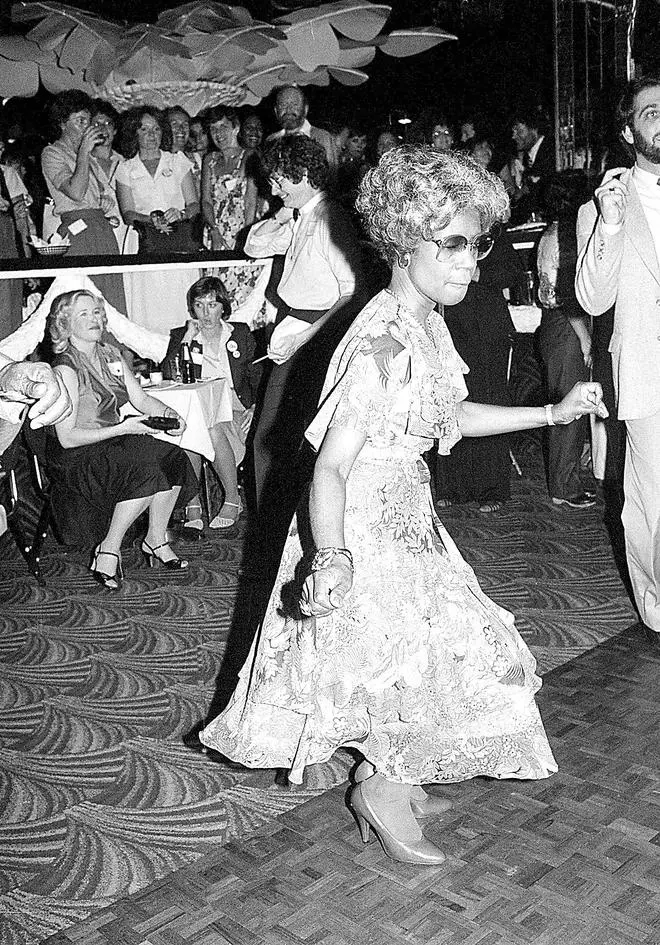
No more music or passion at the Сора
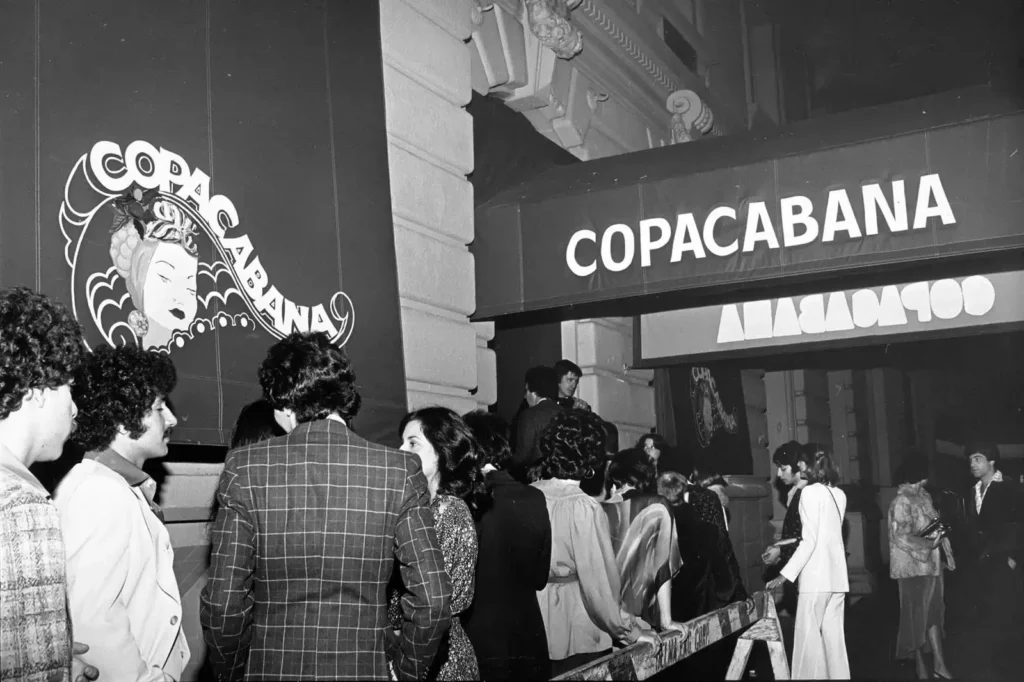
Man with a straw hat
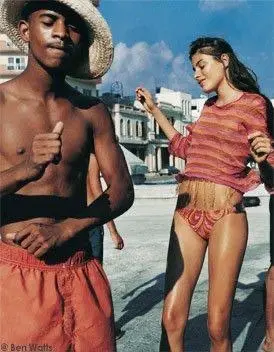
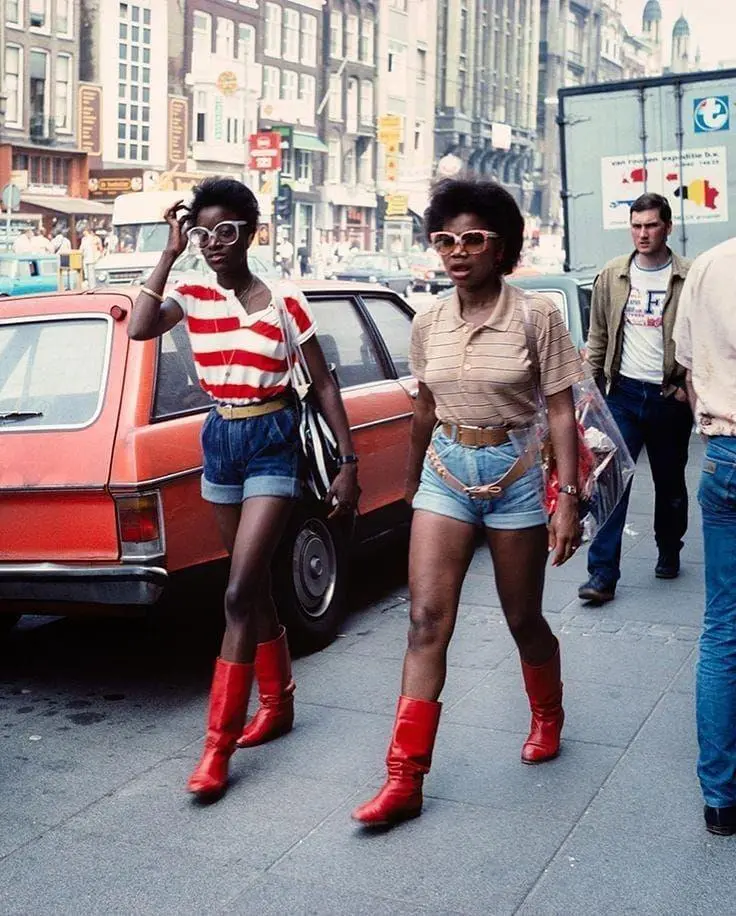
That’s so 80’s hairstyle
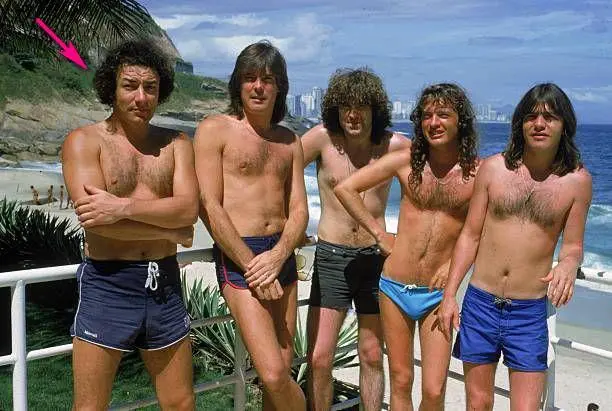
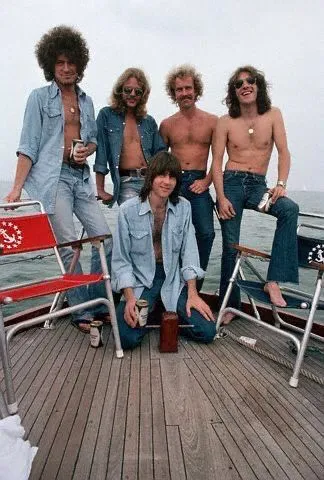
Hip Hop style 1980
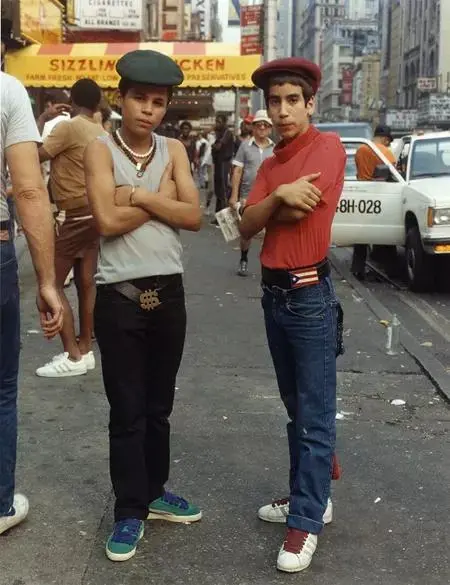
Conclusion: A Glimpse of 80s Rio Glamour.
The 1980s in Rio de Janeiro were an era defined by a unique blend of laid-back beach culture and high-society sophistication. The rich cultivated a distinctive style that was both effortless and luxurious, combining the allure of the city’s natural beauty with the elegance of European fashion. Though tattoos and body art were frowned upon in elite circles, self-expression through fashion, sports, and the vibrant nightlife defined the times. It was a decade where image mattered, yet leisure and the joy of life were never sacrificed a reflection of Rio’s timeless spirit.
